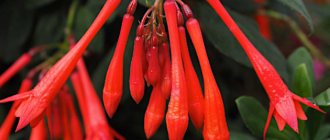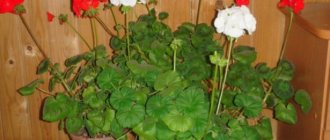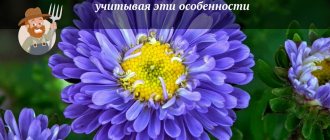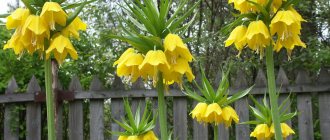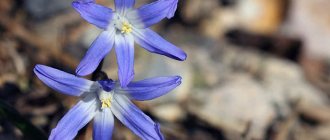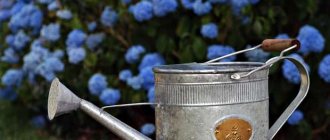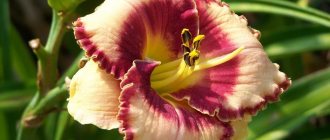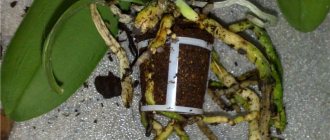In Latin, fritillaria is designated as “hazel grouse”; in common people it is called the “royal crown”. Regardless of the name and variety, fritillaria can be called one of the brightest and most fragrant representatives of the flower world.
A tall and stately plant will be a wonderful addition to the design of a flower bed or garden. The fritillaria flower will not leave any gardener indifferent, and growing the “royal crown” will not be difficult, since hazel grouse is an unpretentious flower and gets along well with its neighbors in the garden.
Fritillaria planting
Proper organization of autumn planting and care of the fritillaria flower, as well as timely control over the plantings, will reward you in the spring with fragrant, lush flowering and a colorful picture of bright hazel grouse buds.
Fritillaria is in demand among most gardeners for its variety of inflorescence color palette and relative unpretentiousness.
Fritillaria is a colorful member of the lily family and has about a hundred varieties of its species. Therefore, choosing the appropriate variety of hazel grouse specifically for your site will not be difficult.
Fritillaria prefers fertile soil, with an average pH level, not clogged, loose and aerated. The planting area should be well lit, but with variable solar activity. In too shaded places, fritillaria will stretch upward, depriving the buds of nutrients, and this will affect the size and color of the inflorescences.
If your area for planting hazel grouse does not meet the above requirements, do not be upset. Poor soil can be easily corrected; to do this, you need to prepare the site in advance. Having dug up the soil at least as deep as a spade, add organic fertilizer 5 buckets for every 5 square meters. m. of land.
Planting of fritillaria begins at the end of August, beginning of September, but not later, since the bulb must take root and have time to gain strength for the upcoming release of the peduncle.
Fritillaria is a large, weighty plant; with a thick, fleshy, tall peduncle, so the planting depth should be at least 25 cm. If the soil of your site is “clogged” or heavy, shallow planting of the bulb up to 25 cm will facilitate germination. But, the optimal solution would be to “lighten” such soil; to do this, add sand (a bucket per 1 sq.m.) and peat (1.5 buckets per sq.m.) into the soil and dig it up.
To correctly calculate the depth of embedding of a fritillaria bulb, you need to multiply the diameter of the bulb by three.
Before planting, fritillaria bulbs are inspected, damaged and suspicious areas are cut off, soaked for several minutes in a solution of potassium permanganate, dried by sprinkling the sections with activated carbon or ash, and then planted.
Holes for planting fritillaria must be formed so that the flowers do not interfere with each other; maintaining a distance of 30 cm between plants will be sufficient. The depth of the hole varies from 25 cm on heavy soils and 35 cm on light soils. A centimeter layer of sand is placed at the bottom of the hole, which will serve as drainage, the soil is abundantly moistened, then the bulb is laid and sprinkled with fertilized soil.
The future flowering and reproduction of the plant will depend on the depth of planting of the fritillaria bulb. The larger the bulb, the deeper the planting. Fritillaria requires a balanced level of soil acidity; the flower will not grow on acidic soils; the same applies to swampy conditions; hazel grouse cannot tolerate stagnant water.
Before planting, think about dispersing the flowers throughout the area; fritillaria blooms all spring and then dies, so it would be better to plant hazel grouse bulbs nearby with other flowers so that the flowerbed does not seem empty.
How to choose good hazel grouse bulbs
When planting any crops, you need to remember that the success of the entire event largely depends on the quality of the planting material. For this reason, you need to plant high-quality onions.
The following tips will help you choose high-quality and good hazel grouse bulbs for autumn planting:
- The main feature of the fritillaria bulb is that it must have a hole left over from last year’s peduncle. In the autumn, buds form in the hole, and in the spring flower stalks appear from them.
- The normal shape is a slightly flattened ball.
- The diameter must be at least 6 centimeters . The optimal size of the imperial hazel grouse bulb is 8-10 centimeters in diameter (if you plant specimens of this size, you can see flowering the very next year). If the size is less than 6 cm, then you will not see flowering next year.
- A good and healthy fritillaria bulb should not show signs of mechanical damage, cracks, stains, ulcers, traces of mold or a musty odor, and it should not be limp. You should refuse to purchase such planting material.
- But don’t refuse the purchase if you notice scales and dry roots, this is completely normal.
- Also, you should not be scared by the specific smell. An unpleasant and pungent aroma is normal for fritillaria ; in the soil it repels pests, mole crickets, and moles.
Advice! Due to the specific smell, it is not recommended to store hazel grouse bulbs next to bulbs of other plants. They will adversely affect their health.
Caring for fritillaria flowers
Caring for fritillaria in open ground does not require significant effort and includes basic agrotechnical measures: weeding, hilling, watering, and fertilizing. And due to the botanical distinctive feature of fritillaria, absorbing moisture not only from the soil, but also from the atmosphere (due to the structure of the leaves) minimizes the frequency of watering.
Fritillaria is an unpretentious plant with enormous potential for luxurious flowering. But in order for the “royal crown” to please you with large inflorescences, minimal fertilization is still necessary.
Fertilization is carried out twice, before flowering and after, so that the bulb gains strength and prepares for wintering. Before fritillaria blooms, apply nitrophoska or phosphorus-potassium fertilizers, water, and after a few days add ash.
Loosening is required when the plant is just beginning to emerge, and also if you notice that the soil has become crusty, once every two weeks will be sufficient for fritillaria to develop.
Watering is done once a week, in dry areas and on light soils twice.
After the hazel grouse has bloomed, the peduncle is cut off, and a week later (after drying) the foliage is cut off, the fritillaria is fertilized with phosphorus and potassium and watering is stopped. In harsh winters, the “royal crown” is covered with mulch.
Fritillaria is resistant to diseases and attacks of harmful insects; it even repels some pests with its specific aroma.
Fritillaria propagation occurs both vegetatively and by seeds. Fritillaria seeds are small and ripen in a seed box formed immediately after flowering.
After the walls of the box have dried, the seeds can be collected. However, sowing hazel grouse is a painstaking and difficult task, since such a flower will bloom only four years after the formation of the bulb.
Seeds are sown in the spring, in warm, fertilized soil, so that the seedlings can get stronger by winter, with a sowing depth of 2 cm.
It is better to sow fritillaria indoors or in a greenhouse, wait until the plant gets stronger and forms a bulb, and then, after vernalization, plant the hazel grouse in open ground.
The vegetative method of propagation of fritillaria occurs by division (formation of children) of the mother flower bulb. New “babies” should not be transplanted in the first year; it is necessary to allow the young bulb to learn to live independently and acquire a sufficient number of roots.
The optimal time for transplanting fritillaria is the first ten days of autumn; during this period, separate the two-year-old children from the mother bulb; they are easily detached and there are no problems with transplantation.
Diseases and pests
Hazel grouse are not afraid of pests due to the sharp unpleasant smell of the bulbs; they smell like fresh horse manure. This smell repels mice, rats and moles. The pest of this perennial is the leaf beetle, a red beetle that eats flowering buds and leaves. It is collected and treated with insecticides. Slugs also greatly harm hazel grouse, and bulbs can be pierced by wireworms.
Leaf beetle
Hazel grouse are resistant to diseases; they do not suffer from viral diseases, like tulips and crocuses. Cold and wet weather can cause the bulbs to rot, but the rotten areas can be cut off and treated with ash, coal, alcohol or even brilliant green, and dried.
Fritillaria "Rubra"
The perennial variety of fritillaria "Rubra" has large scarlet inflorescences and emerald green leaves. Height is about 75 cm. It blooms for up to three weeks, profusely and colorfully, after “Rubra” it throws out the seed box and goes into a dormant state. Reproduces vegetatively (by children) and seeds. The "Rubra" variety of fritillaria does not require special care. Suitable for both planting in open ground and for use as a potted crop.
Planting a flower Imperial fritillary
It is advisable to plant spring flower bulbs in September-October. Remember that the planting depth should be 3 times greater than the height of the bulb itself, so it varies from 10 to 30 cm. Such deep planting allows the hazel grouse to draw water from the lower layers of the soil and survive frosts in winter. If you plant several flowers next to each other, the distance between them should be at least 40 cm.
The bulbs have a round shape with notches on top. This side should be set up. If the bulbs have small roots, use this as a factor in determining which side is the bottom. When planting, experts advise laying the bulbs at an angle on a layer of sand so that water does not stagnate in the upper recess.
After planting, water the planting site well. Roots will begin to form in the fall, and flowers and foliage will form in the spring.
Remember, Fritillaria bulbs dry out quite quickly, so be sure to plant them as soon as you get them home from the nursery or as soon as they arrive in the mail.
Fritillaria "Ryabchik"
The variety belongs to the perennial, bulbous variety. It has a strong, tall stem, narrow dark green leaves, large, elongated, drooping flowers.
The inflorescences bloom almost simultaneously, with an interval of a day.
The flowers are bright orange in color and, depending on the variety, are spotted or have large veins. Flowering begins in May and lasts up to three weeks. "Hazel grouse" prefers shaded places and fertile soil. The flower reproduces quickly, without care and planting it quickly runs wild. The most prominent representatives of the variety can be called: Imperial hazel grouse, Kamchatka, Caucasian, Russian, Mars, Orion, Aphrodite.
Persian hazel grouse (Fritillaria persica)
Grouse, or fritillaria , are surprisingly good for spring flower beds. They are very diverse in height, habit, shape and color of flowers, and flowering time.
In our country there are 26 species of these wonderful bulbous plants, in total there are about 100 of them on the globe. They are found in the alpine and subalpine mountain belts, among shrubs and trees, in meadows.
I would like to dwell on the most decorative species that have been growing in my garden for many years. With good agricultural technology, plants of the natural flora, including hazel grouse, become more powerful, the size of the flowers increases, and the color becomes brighter.
Persian hazel grouse (Fritillaria persica) . This is the only species representing the Theresia group in the Fritillaria classification. The specific name reflects the place of natural growth: valleys and slopes of mountainous Iran and Turkey. In culture since the 19th century. A surprisingly elegant plant 60-100 cm high. The inflorescence is a spectacular vertical cone densely strewn with open flowers and buds. An unusually beautiful combination of dark, almost black bells against a background of bluish leaves. In some modern varieties, the number of flowers in an inflorescence can be 20-30 or even 50 flowers. Most often, European nurseries supply tall varieties Adiyaman and Sonkoy. Much less common on sale is the Ivory Bell variety with many pale light green bells on a strong peduncle. Its greenish “spiers” will decorate any spring garden; compositions look especially elegant in combination with white and green-flowered varieties of tulips (Tres Chis, Mount Tacoma, Daytona, Spring Green, City of Vancouver, etc.). Recently, a form of Persian fritillary has appeared with two-tone flower colors: the outer lobes are deep brown, and the inner lobes are cream. Despite the fact that the Persian hazel grouse is a southern plant, when covered with leaves for the winter, it overwinters quite tolerably in our country, but it does not always bloom regularly. The bulbs of the Persian hazel grouse are large with a diameter of 7-12 cm, so we plant them at a depth of 20-30 cm. However, it is not always possible to ensure a high temperature and dry content of the bulb during the dormant period at such a depth. Therefore, when the foliage turns yellow, hazel grouse bulbs should be dug up and warmed up. In principle, it is enough to warm them up before planting by keeping them in a dark and warm place at a temperature of +25. 300C. We plant the bulbs in the ground when the first roots appear and only in full sun, preferably on the south side of the house in well-drained fertile soil with the addition of sand and gravel.
Read also: Alpine Edelweiss planting and care in open ground
Reproduction
The price of hazel grouse planting material has always been “biting”. Therefore, the conversation about propagating these plants on our own, in my opinion, is extremely relevant. The easiest way to get a lot of plants is to grow them from seeds. To do this, it is enough to have two flowering specimens of the same species in the garden and collect the seeds in time. And although you will have to wait from three to five years for seedlings to bloom, and in some species even longer, you will get plants that are more adapted to your soil and climatic conditions and, in general, to many unfavorable factors. It is better to sow the seeds freshly harvested, on raised ridges in soil well fertilized with rotted organic matter (plants here grow without replanting until flowering) in furrows 8-10 cm wide, and with the same row spacing. The depth of seeding is 1 cm. The surface is mulched with a layer of 2 cm. Seeds sown in the year of collection germinate in the spring, and winter-stored seeds sown in the spring germinate only a year later. If you are not going to propagate hazel grouse by seeds, then the developing seed pods should be cut off immediately after flowering, otherwise the bulb will become smaller and may not bloom the next year. Plants can be obtained faster, but in smaller quantities, through vegetative propagation. All types of hazel grouse are characterized by an annual bulb, which is replaced by a new one every year. In some species, only one is formed, and with good care - a larger one, in others - two or several, but small. Species that have long been introduced into cultivation, such as imperial and chess grouse, reproduce well and regularly, although in nature these species mainly reproduce by seed, and they almost never divide. Many species, in addition to the main replacement bulb, annually produce a lot of small children the size of a little larger than a millet grain (R. needle-petal, R. uvavulpis, R. golden). True, the baby has to be grown and brought to flowering no less than seedlings, for three to four years. But the Kamchatka and modest hazel grouse, representing the group Liliorhiza, reproduce like lilies with the help of scales. Their population in the garden can be easily increased by peeling off some of the peripheral scales from the mother bulb. In poorly reproducing species of hazel grouse, you can resort to artificial division of the bulbs. The easiest option is to break the onion, consisting of two parts. Then dry the sections so that the wound surfaces heal. We plant the divisions in the ground earlier than whole, week-old bulbs, because... They have reduced resistance to drying out. Imperial, Edwardian and Persian hazel grouse (Pelitium, Theresia groups, as well as hazel grouse from the Korolkowia group) can be propagated by cutting an adult onion into several large pieces (like orange slices), the main thing is that it retains a piece of the bottom. Another option for propagating these hazel grouse is deep furrowing of the bulb. To do this, the onion is cut with a knife in several places from top to bottom (in the meridional direction) and, after drying, planted in the ground. The above manipulations should be carried out with a freshly dug bulb while it is in deep dormancy. Usually this period does not exceed three weeks from the moment the leaves turn yellow. Before planting in the ground, cut or incised bulbs are stored briefly in dry sand in a ventilated area. The cut areas should be sprinkled with crushed coal, or better yet treated with a fungicide. Any type of hazel grouse is beautiful and attractive in its own way, but sometimes it is not immediately possible to appreciate its charm. And here it is very important for each plant to find “its” place in the garden and, if possible, create conditions close to the natural habitats of a particular species, detailing agricultural technology depending on its individual characteristics. But more on that in the next issue. Any type of hazel grouse is beautiful and attractive in its own way, but sometimes it is not immediately possible to appreciate its charm. And here it is very important for each plant to find “its” place in the garden, and, if possible, to create conditions close to its natural growing areas, detailing the agricultural technology of the species, depending on its preferences. The numerous genus Fritillaria (hazel grouse) is divided into 6 groups by taxonomists. Hazel grouse of the Eufritillaria group, by the way, are the most numerous in the genus Fritillaria. These plants do not differ in power and height; they have only 1-3 flowers at the top of the peduncle. And the color of bell-shaped flowers is usually discreet and modest. They bloom in April. The bulb is usually small, 1.0-3.5 cm in diameter, and consists of two (sometimes more) fleshy storage scales. This structure makes it easy to propagate the plant by simply breaking an adult bulb in half. In addition, representatives of this group reproduce well by offspring and seeds. This group includes Mikhailovsky's fritillaries, checkered and golden, well known among gardeners, as well as rare garden forms of green-flowered fritillaries: Assyrian, pale-flowered, needle-petaled, Pontic, and Harmon grouse. Amansky. A good gift for fritillary lovers are Elvis's hazel grouse and Davis's hazel grouse.
Read also: Large-leaved pink hydrangea planting and care in open ground
Fritillaria "Imperial"
Fritillaria “Imperial” has one of the largest inflorescences and buds. It was this variety that was the first to be called the “royal crown”. The inflorescences are collected in a tight, lush crown from bright orange to scarlet; above the inflorescences there is a kind of crown of leaves. An unpretentious variety, blooms from May to June. Reaches up to a meter in height. Will be a wonderful addition to any flower arrangement.
Types and varieties of hazel grouse with photos and names
The classification of hazel grouse is not very simple, but all these professional subtleties are of no use to a simple gardener. Below is a general overview of the most popular species and varieties in cultivation. Such plants are divided into 6 sections.
Section I Eufritillaria
It consists of 4 groups. This section contains only those species whose homeland is the Mediterranean, Western Europe and Western Asia. The checkerboard hazel grouse is the most prominent representative of this section: it has been cultivated since 1572, it was named so because the color of the flowers is very similar to the color of the grouse. The bush reaches a height of 0.35 m. The hanging bell-shaped flowers are single; very rarely two flowers can grow. They have a brownish-purple color and a checkerboard pattern. This plant is unpretentious and has many varieties and garden forms:
- Aphrodite and Alba are forms with white flowers;
- Artemis - the color of the flowers is greenish-purple;
- Jupiter - has relatively large flowers of a dark red color.
This group also includes such species as: Caucasian hazel grouse, checkerboard, mountain, Mikhailovsky, needle-petaled, yellow, etc.
Section II Petilium
It includes the largest species native to Turkey, Turkmenistan, the Western Himalayas and North-Eastern Iraq. The royal hazel grouse is considered a very prominent representative of this section (today it is called the imperial hazel grouse). This species comes from Turkey; it was brought to European countries in 1580; at the moment there are approximately 20 different forms. A distinctive feature of this species is the unpleasant smell emanating from the bulbs; the stem can reach a height of about 100 centimeters. Whorled leaf blades are broadly lanceolate. The diameter of the drooping bell-shaped flowers is about 6 centimeters, they are colored orange, have brown veins on the surface, and a spot of the same color at the base. Popular varieties:
- Aurora. The low-growing bush can reach only 0.6 m in height. The color of the flowers is red-orange.
- Lutea and Lutea maxima. The color of the flowers is yellow-golden. The height of the bushes can reach 1 m and 1.2 m, respectively.
- Sulferino. This option is a classic. There is a red mesh on the surface of the orange flowers.
Also in this section are Radde's hazel grouse and Eduard's hazel grouse.
Section III Theresia
There is only one representative in this section, namely the Persian hazel grouse, whose homeland is Western Asia.
Section IV Rhinopetalum
This section includes species from Afghanistan and Western China such as: two-flowered hazel grouse, Kamchatka and related ones. Popular varieties of related hazel grouse:
- Limelight. The height of the bush is about 0.6 m. There are spots of olive color on the surface of the green flowers.
- Wayne Roderick. This cultivar was created by Chinese breeders. The flowers are an iridescent emerald-brown with green tips and red or brownish-black markings.
Section V Korolkowia
There is only 1 species in this section - Severtsov's hazel grouse. This plant is endemic to Central Asia (it can only be found in the wild there).
Section VI Liliophiza
This section includes species from North America. For example, gray hazel grouse: the height of the bush is about 0.15 m, the long yellow-golden flowers on the inner surface have small brown dots. In European countries it is used exclusively for decorating greenhouses.
Fritillaria "Meleagris" and "Uva Vulpis"
Fritillaria "Uva Vulpis" belongs to the Assyrian species and is one of the most beautiful varieties. It blooms with large dark burgundy inflorescences, the inner part of the bud is olive in color.
The flower is of average height about 65 cm, with lush long foliage.
"Motley" and the variety "Meleagris" belong to the checkerboard species of fritillaria. They are distinguished by the bright, graphic and memorable color of the petals. The low-growing, sparsely leafy stem reaches a height of up to half a meter. “Meleagris”, despite its unusual color, does not require painstaking care, grows well in any garden, but without attention it quickly grows wild and becomes smaller.
Description of the plant
Imperial (royal) hazel grouse is a herbaceous perennial that is a bulbous plant. Its height can reach one and a half meters. The shape of the bulb is almost spherical, has a rather pungent odor, and its diameter is no more than 10 cm.
The stem of the plant has lanceolate leaves. They sit in 3-4 whorls. The inflorescence is single, umbellate. There are about 20 bracts above it. As can be seen in the photo, the flower of the imperial hazel grouse has a bell-shaped perianth, the length of which can reach 5.5 cm. The color is orange or red; decorative forms are often yellow.
The imperial hazel grouse has amazingly beautiful drooping bell-like flowers, which is why this plant is of particular value to many gardeners
Bright flowers are formed in the leaf axils, which are located along the stem of the plant. Large buds usually sit in groups of 5-7 pieces. In this case, the flowers do not form at the ends of the shoots - the leafy mass grows above them.
The leaves of the imperial hazel grouse have an elongated shape, emerald color and a glossy surface. Some varieties differ in that their leaves are arranged in two rows.
Of the entire variety of imperial hazel grouse varieties, only a few are suitable for cultivation in our climatic conditions. Among them:
- GarlandStar. Plants of this variety are relatively large and produce a powerful, strong, stable stem. During the flowering period, flowers appear - large, bright orange in color. Unlike other varieties, this one is characterized by a luxurious crown of a large number of flowers.
.GarlandStar variety Rubra. Representatives of this variety are the shortest - their height often does not exceed 70 cm. The flowers are orange or brick-colored, the petals are quite large, crimson in color, with barely noticeable veins on the inside. Because of this color, the plant looks very interesting and original.
Variety "Rubra" "StripedBeauty". Plants belonging to this variety are characterized by a golden color of the petals. The inflorescences are bell-shaped and consist of several flowers. Red stripes are visible on the inside and outside of the petals.
Variety "StripedBeauty" "Raddeana". Incredibly delicate flowers in the shape of bells, of which there can be up to 7 pieces in one inflorescence. The color of the petals is creamy yellow. This variety is characterized by high drought and cold resistance. A single plant can bloom for 15-20 days.
Variety "Raddeana" "Lutea". During the flowering period, it forms racemose inflorescences, which can contain up to 8 flowers. The buds are quite large and yellow in color. In the nectarine zone, a whitish border is visible, which can turn purple or greenish.
Variety "Lutea"
Important! Remember that the imperial hazel grouse, despite a fairly rich variety of shades, has its own limited spectrum of color - yellow-orange-red! The shades do not go beyond it. You need to know this so as not to become a victim of scammers who, through online stores, may offer plants with blue, lilac or violet buds! The photos in this case will simply be edited!
Fritillaria "Radde"
“Radde” is a beautiful variety of fritillaria, flowering lasts about three weeks, with large wide inflorescences of a delicate yellow-green color. Leaves are thin and long
rich green color. After flowering, "Radde" enters a dormant stage. "Radde" will respond with large and lush flowering and minimal care. The variety is used for landscaping and as an addition to flower arrangements.
Hazel grouse in garden design
The hazel grouse blooms when there are still few other flowers, but it looks good in the company of its own kind. For example, imperial hazel grouse, growing in groups of 2 to 3 plants, will decorate a spring garden well.
Due to the fact that the early flower loves sunny, elevated places and is undemanding to moisture, it can be well suited for alpine slides.
In addition, it combines well with other early flowers such as tulips, daffodils, chionodoxes and hyacinths.
As you can see, the hazel grouse flower fits very organically into the style of any garden, and we hope that the proposed description and features of planting and care will help you choose a beautiful variety to diversify your garden compositions. Good luck!
Fritillaria “Persian” (black)
A representative of the Teresia group, “Persian” fritillary originates from Turkey and Iran. Blooms with large bells from dark burgundy, dark blue to
black flowers, with no less amazing bluish-green leaves. The buds are collected in a vertical cone. The height of the “Persian” fritillary reaches 90 cm in height. One peduncle can produce up to 25 buds.
How flowers are propagated by seeds
After the hazel grouse capsule has completely dried, collect the seeds. Then immediately sow them into the ground. The soil must be nutritious, since flowers are not transplanted to another place for about 5-7 years. The plants are fed every year. Plant the seeds to a depth of 1 cm in furrows 10 cm wide. Also leave 10 cm between the rows. Cover the seeds with 2 cm of peat on top.
Next spring you will be able to admire the seedlings. When the bulbs are 2 years old, they can be dug up and stored in a dry place during the summer to protect them from soil moisture. But with such reproduction, Fritillaria will bloom only after 5-7 years.
Secrets of lush flowering of fritillaria
After winter sleep and the soil warming up to +12, fritillaria awakens and appears on the surface by the end of April. Loosen the soil around the flower, remove weeds, and apply phosphorus-potassium fertilizers.
During the period of active growth, the hazel grouse will reach half a meter in a couple of weeks; during this period, fertilizing in the form of compost should be applied. And when the plant produces its first flower stalk, apply root fertilizer in the form of ABA (all-purpose) granules for garden flowers.
During flowering, keep your fritillaria plantings moist and loosen the soil in a timely manner; this will saturate the plant with oxygen. Removing the seed box will increase the flowering period to 5 days. If you follow all the above measures, fritillaria will delight you not only with lush and large flowering, but also with unusually bright colors of flowers.
